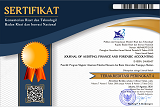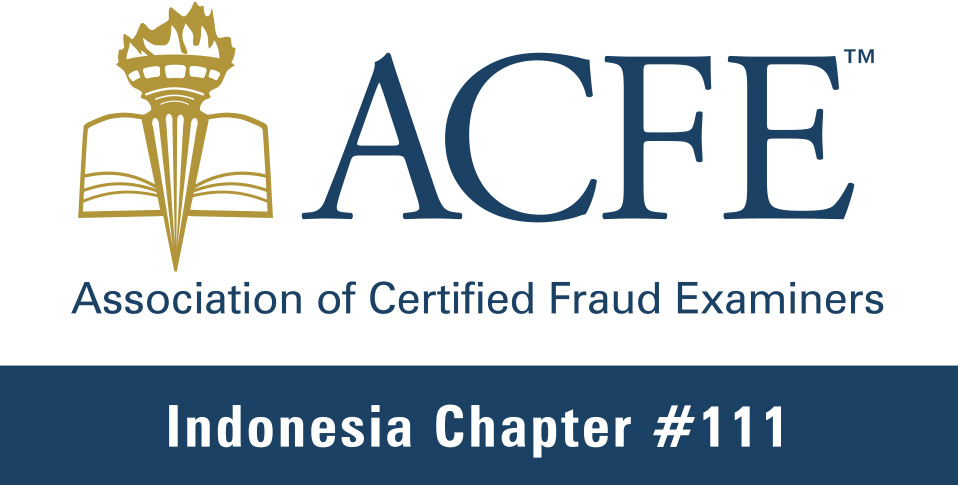Effect of Pressure, Opportunity, Rationalizations, Capability and Arrogance in The Concept of The Fraud Pentagon
Abstract
Keywords
Full Text:
PDFReferences
Annisya, M., Lindrianasari, & Asmaranti, Y. (2016). Pendeteksian Kecurang Laporan Keuangan Menggunakan Fraud Diamond. Jurnal Bisnis Dan Ekonomi (JBE), Vol. 23 No. 1, 72 – 89 ISSN: 1412-3126.
Apriliana, S. & Agustina, L. (2017). The Analysis of Fraudulent Financial Reporting Determinant through Fraud Pentagon Approach. Jurnal Dinamika Akuntansi, 9(2), 154-165
Ardiyani, S., dan Sri Utaminingsih, N. (2015). Analisis Determinan Financial Statement Melalui Pendekatan Fraud Triangle. Accounting Analysis Journal, 4(1), 1–10.
Bayagub, A., Zulfa, K., & Mustoffa, A. F. (2018). Analisis Elemen-Elemen Fraud Pentagon Sebagai Determinan Fraudulent Financial Reporting (Studi Pada Perusahaan Property dan Real Estate Yang Terdaftar di Bursa Efek Indonesia Periode 2014-2016). Jurnal Ekonomi, Manajemen dan Akuntansi-Universitas Muhammadiyah Ponorogo, Vol.2 No.1, 1-11
Cressey, D. R. (1953). Other People’s Money: a Study in the Social Psychology of Embezzlement. Glencoe, IL: Free Press.
Crowe. (2011). Putting the Freud in Fraud: Why the Fraud Triangle Is No Longer Enough, IN Howart, Crowe
Ghozali, I. (2013). Aplikasi Analisis Multivariate Dengan Program SPSS (7th 8ed.). Semarang: BP Universitas Diponegoro.
Hammood, H., Talab, H., & Ali, I. S. (2018). Role Of Beneish M-Score Model in Detecting of Earning Management Practice Empirical Study in Listed Banks of Iraqi Stock Exchange. International Journal of Applied Business and Economic Research. Vol. 15 No.23
Husmawati, P., Septriani, Y., Rosita, I., & Handayani, D. (2017). Fraud Pentagon Analysis in Assessing the Likelihood of Fraudulent Financial Statement (Study on Manufacturing Firms Listed in Bursa Efek Indonesia Period 2013-
. International Conferenceof Applied Science on Engineering, Business, Linguistics and Information Technology. 45-51
Jensen, M. C., & Meckling, W. H. (1976). Theory of the firm: Managerial behavior, agency costs and ownership structure. Journal of Financial Economics, Vol.3
No 4, 305–360. Available athttps://doi.org/10.1016/0304-405X(76)90026-X
Putriasih, K., `Ni N. T. H., & Made A. W. (2016). Analisis Fraud Diamond dalam Mendeteksi Financial Statement Fraud: Studi Empiris pada Perusahaan Manufaktur yang Terdaftar Di Bursa Efek Indonesia (BEI) Tahun 2013-2015. e-Journal S1 Ak Universitas Pendidikan Ganesha Jurusan Akuntansi Program S1 Vol:6 No:3.
Rini, Viva Y. dan Tarmizi Achmad. 2012. Analisis Prediksi Potensi Risiko Fraudulent Financial Statement Melalui Fraud Score Model. Diponegoro Journal Of Accounting, Vol. 1, No. 1.
Siddiq, F. R., Achyani, F., & Zulfikar. (2017). Fraud Pentagon dalam Mendeteksi Financial Statement. Journal of Seminar Nasional Dan The 4th Call for Syariah Paper, 1-14-784.
Sihombing, K. S., & Rahardjo, S. N. (2014). Analisis Fraud Diamond dalam Mendeteksi Financial Statement Fraud: Studi Empiris pada Perusahaan Manufaktur yang Terdaftar di Bursa Efek Indonesia (BEI) Tahun 2010-2012, Diponegoro Journal of Accounting Vol. 03 No. 02. ISSN (Online) : 2337 -3806. NDG
Skousen, C.J. (2009). Detecting and Predicting Financial Stability: The Effectiveness of the Fraud Triangle and SAS N0. 99. Journal of Accounting and Auditing. SSRN (Social Science Research Network), Vol. 13, 53-81.
Tessa, C., & Harto, P. (2016). Fraudulent Financial Reporting: Pengujian Teori Fraud Pentagon pada Sektor Keuangan dan Perbankan di Indonesia. Journal of Simposium Nasional Akuntansi XIX, Lampung.
Ulfah, M., Nuraina, E., & Wijaya, A. L. (2017). Pengaruh Fraud Pentagon dalam Mendeteksi Fraudulent Financial Reporting (Studi Empiris pada Perbankan di Indonesia Yang Terdaftar di Bei. Journal of The 9th FIPA: Forum Ilmiah Pendidikan Akuntansi - Universitas PGRI Madiun, Vol. 5 No.1, 399-418- NaN-9723.
Wolfe, D. T. & Hermanson D. R. (2004). The Fraud Diamond: Considering the Four Elements of Fraud. CPA Journal. Vol 74.
DOI: https://doi.org/10.21107/jaffa.v8i2.8773
Refbacks
- There are currently no refbacks.
Our Journal indexed by:
Our support tools using:



This work is licensed under a Creative Commons Attribution 4.0 International License.












